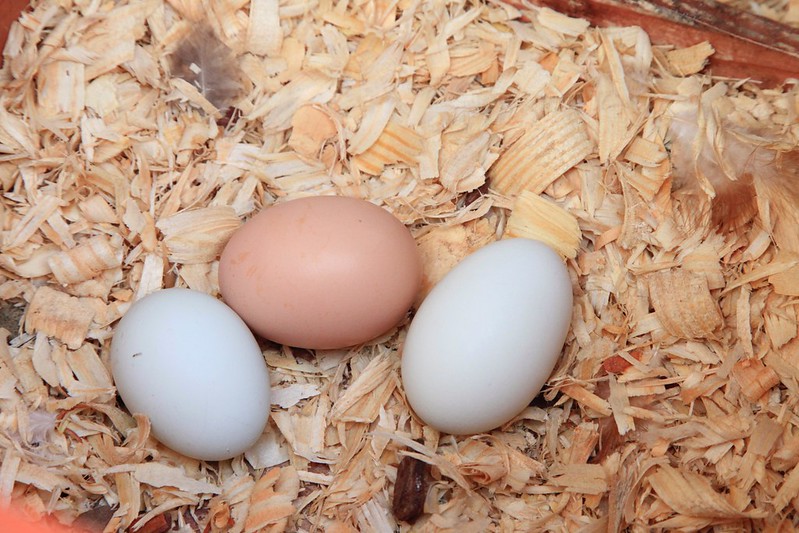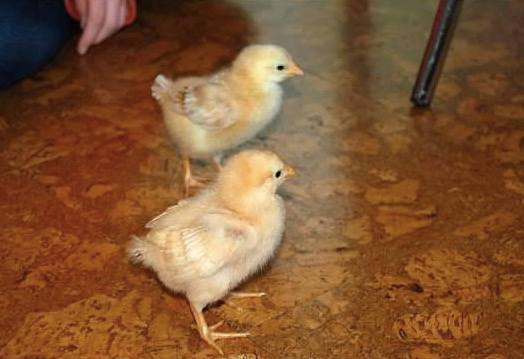Co-reported by Sandhya Kannan and Jessica Xing
Sophomore Samhitha Tarra doesn’t need an alarm clock when she has the clamorous squawking of her four chickens to wake her up at every sunrise.
A year ago, it started with a backyard, a local farm and some impulsive buying to end up with a clutch of baby chicks. For Tarra, this process was easy: With just a little family discussion, the power of online convenience shipping and Dare to Dream farms in Lompoc, California, Tarra had her new family members delivered right to her doorstep. However, this was no ordinary package — the Tarra household had to make a number of accommodations for the chickens to fit properly.
The moment the chickens became a real possibility, the Tarra family realized that their backyard needed a severe makeover. The blooming bushes that covered the perimeter of their fence, the menacing vines and roots that curled under and across the fluttering petals of the flower shrubs and the smooth green carpet of grass that filled all the gaps — these all needed to be flushed of harmful pesticides. It was time to go organic.
“We keep all their food as simple pellets,” Tarra said. “People say that the eggs taste fresher … I remember that my friend said she went to Costco and she cracked an egg but there was a dead chick inside … so it’s better to have the fresh eggs that we have.”
For an entire three months, the Tarra family’s gardener was strictly instructed to tame their backyard forest without any pesticides. The heavy rains that followed were welcomed with open arms — as the water passed through the gardens, any residue chemicals flowed out and away. When the chicks arrived, their backyard was greener than ever — both literally and figuratively.
Scroll through the album below for photos of Tarra’s chickens and backyard!
Conversely, sophomore Ellen Li didn’t have such a clean transition to chicken farming. Upon receiving her chicks, the one thing that stood out to her was how dirty her backyard had become.
“You have to be really prepared to do gross stuff too,” Li said. “I clean their coop and feed them and have to take care of them when it’s raining. But you get the responsibility of taking care of the animals.”
To distinguish between her hens, Li named each after a citrus fruit. Her backyard was a smoothie blend comprising of Tangerine, Pomelo, Lemon, Lime and Clementine running around and creating a ruckus.
“When Lemon and Lime died, my sister’s friend gave us another chicken,” Li said. “But that one was low-key mentally deranged and wouldn’t lay eggs, so I think my dad sold it on Craigslist.”
Chickens were not the first animals to grace the Li household. On top of her three living chickens, Li also has a dog to keep them company.
“We got the chickens when they were very young so they never saw the dog as a threat, and the dog never saw them as food,” Li said. “Our dog is pretty protective of the chickens.”
Li’s dog guarded the chicks from hawks and other birds of prey as if it were in a position assumed at birth. The dog’s role in raising the chicks was vital to the chick’s livelihoods due to the abundance of predatory wildlife in Cupertino. On the other hand, Tarra’s family has a fake hawk to keep predators away from the coop and backyard during the nights.
Apart from the species distinction, raising chicks to become healthy hens is not much different from raising a human baby to adulthood. Each furball is nurtured to health, passing through what each chicken owner noted as an “awkward teenage phase,” to a point of adulthood in all its feathery glory.
In the span of a year, the chicks that had once fit in the palm of a hand would soon require two arms and a hefty amount of willpower to keep still. Tarra started a photo album to keep track of each chicken’s growth and to record memories from each individual chicken’s different stages of life.
But with life comes eventual death, and with chickens being such easy targets for predators, strict safety precautions are absolutely vital. For junior Avery Newman, her chickens’ demise was exactly that: a lack of safety from other predatory animals. Newman’s two chickens, the second of which died three weeks ago, have all respectively been taken away by hawks or wildcats traveling down from the nearby hills. The ones that weren’t swept away by predators faced direct attacks and were left severely injured by bites and excessive bleeding.
“When they’re little you have to keep a really close eye on them,” Newman said. “I have the coop that me and my dad made for fun and we had to slowly introduced them to the outside of it. It’s not until they have enough feathers they can start to do things themselves.”
But when Newman thinks back to her experiences and memories with the chickens, she can’t help but smile.
“My chickens thought they could fly and chickens can’t fly,” Newman said, “so they tried flying up onto garbage cans and our shed and stuff but they would keep flying directly into the shed and realize it wasn’t a good idea.”
Although at times their tendency towards stupidity only augmented their high maintenance lifestyles, their rambunctious personalities proved to be an undeniable source of laughter.
“They were a good form of entertainment, as they grew older they started to have their own personalities and I loved every moment of it.”
Scroll below for photos of Newman’s backyard and chickens (photos used with permission of Avery Newman)







